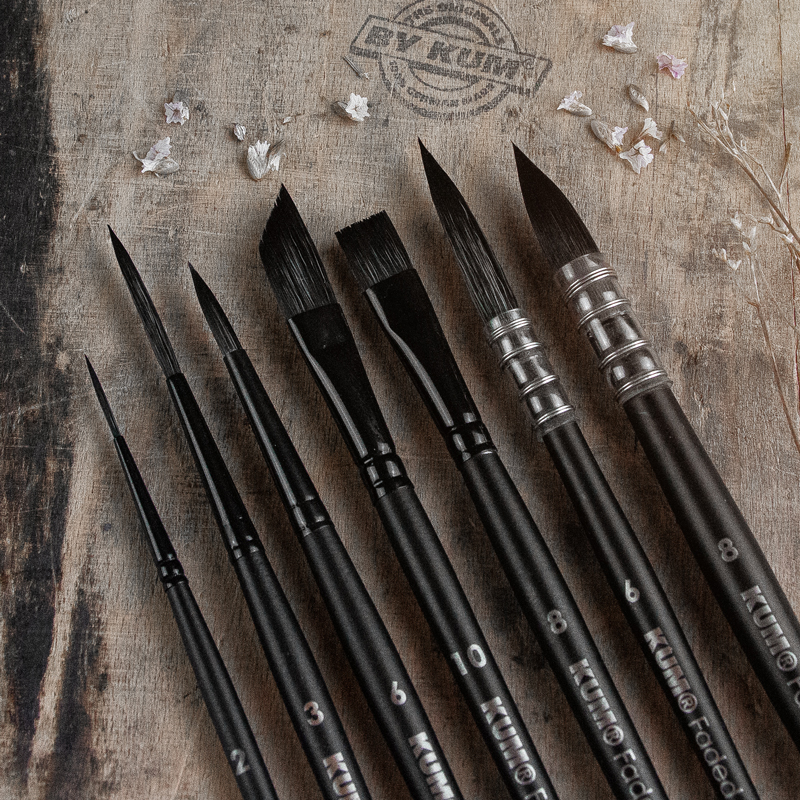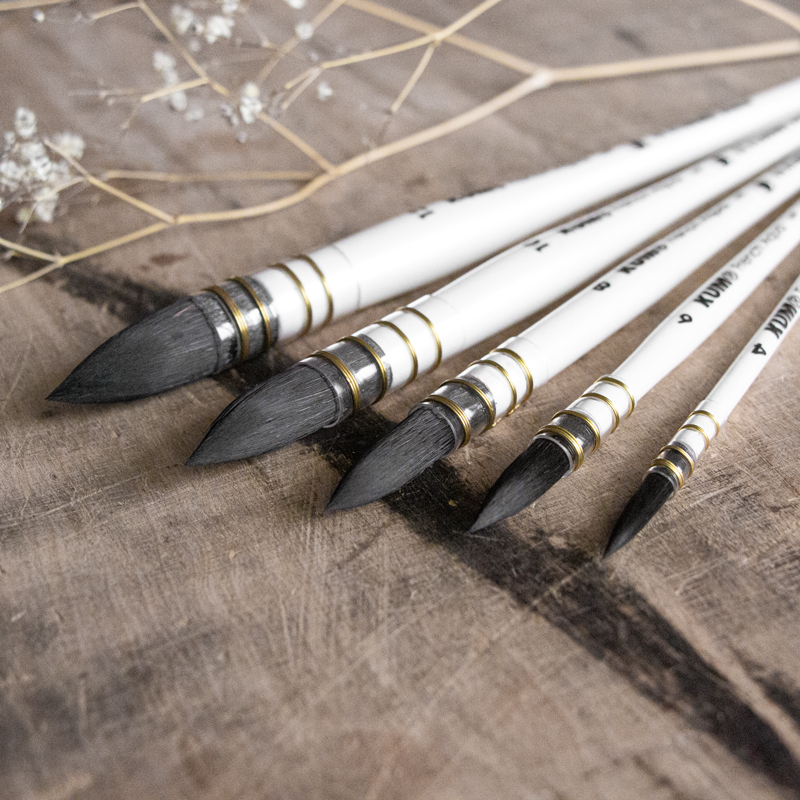KUM watercolor brushes
Everything you need to know about watercolor brushes!
-
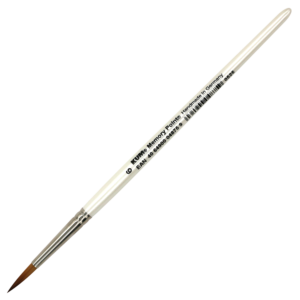
KUM Memory Point
€4,59 – €27,49
Includes 19% MwSt.plus shippingzeig mir mehr -
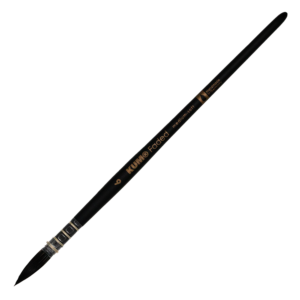
KUM Faded
€9,99 – €29,99
Includes 19% MwSt.plus shippingzeig mir mehr -
Sale!
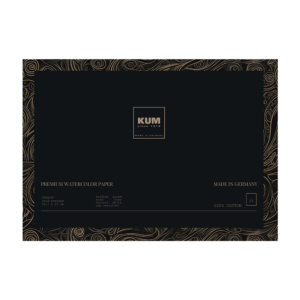
KUM Fade-4 | Premium Watercolor Paper
Original price was: €17,90.€15,21Current price is: €15,21.
Includes 19% MwSt.plus shippingzeig mir mehr -
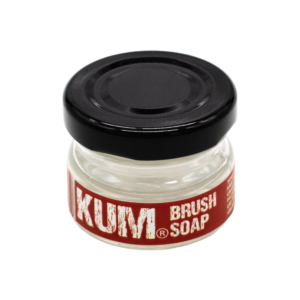
KUM Brush Soap
€5,99
Includes 19% MwSt.plus shippingzeig mir mehr -
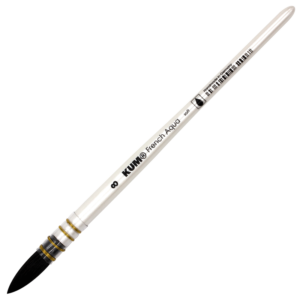
KUM French Aqua
€19,49 – €44,99
Includes 19% MwSt.plus shippingzeig mir mehr -
Sale!
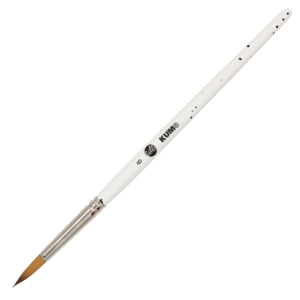
Memory Point Blobs KUM X Frau Hölle
€3,84 – €25,99
Includes 19% MwSt.plus shippingzeig mir mehr
What color is a watercolor brush suitable for?
In painting, a basic distinction is made between watery paints, such as watercolors, and pasty paints, such as oil paints.
To find out which brushes are suitable for which type of paints, we differentiate and label our brushes with a degree of hardness.
This describes the elasticity or resilience of the brush fibres.
Our watercolor brushes range in their hardness between soft and medium.
They have particularly soft brush hairs and are therefore ideally suited for watery paints.
Brushes with a soft degree of hardness, such as the KUM French Aqua, are intended exclusively for watercolours.
The KUM Memory Point, marked with the hardness level medium, has a little more elasticity and is therefore wonderfully suitable for gouache in addition to watercolours.
For thicker paints, on the other hand, harder brushes are used, such as the KUM Black Line brushes, with which the paint can be spread well.
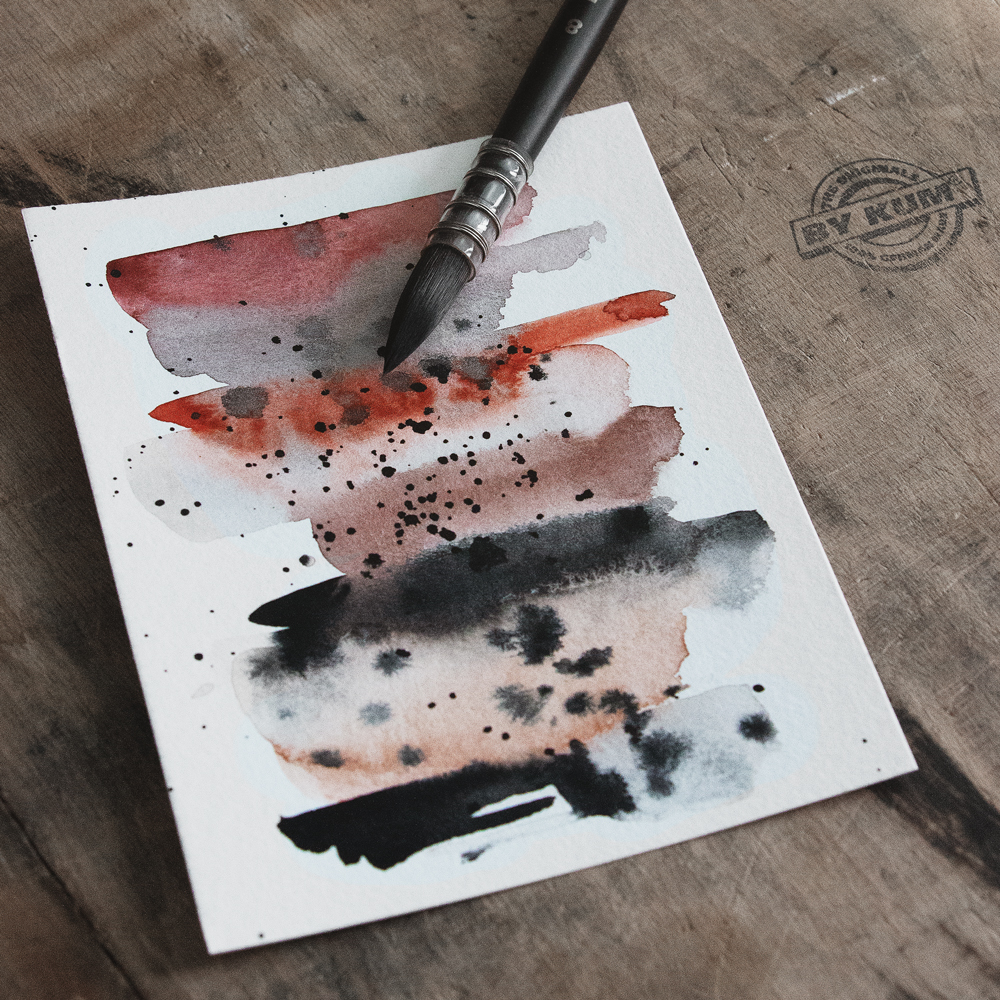
Which is better?
Synthetic hair or human hair?
Human hair brushes have proven themselves for centuries and have a good reputation.
However, these are also very expensive and especially at a time when animal welfare is becoming more and more important, the question of alternative watercolor brushes arises.
In recent years, synthetic fibers have been developed further and further and are now hardly distinguishable from human hair brushes.
Watercolor brushes with synthetic hairs are not only an inexpensive, but also a good and vegan alternative.
In some cases, however, the synthetic fibers can also surpass real hair, as they are easier to clean, for example.
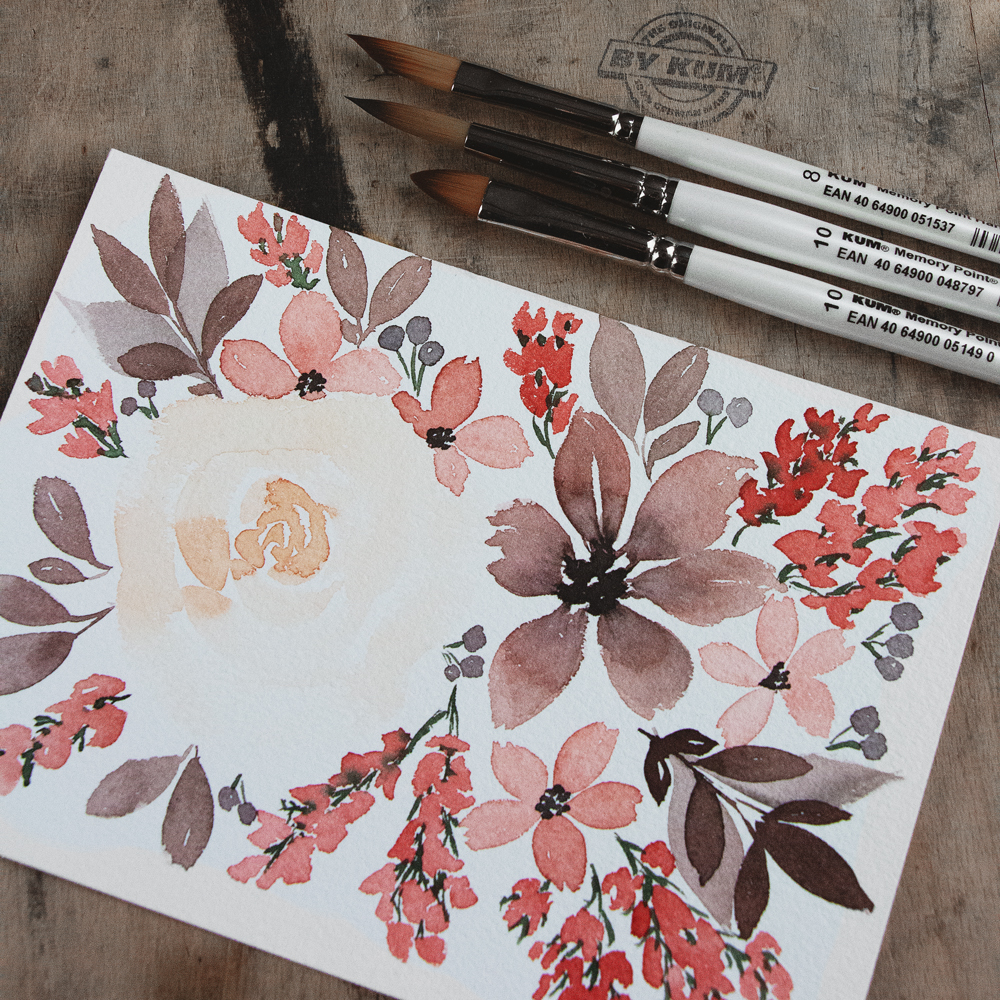
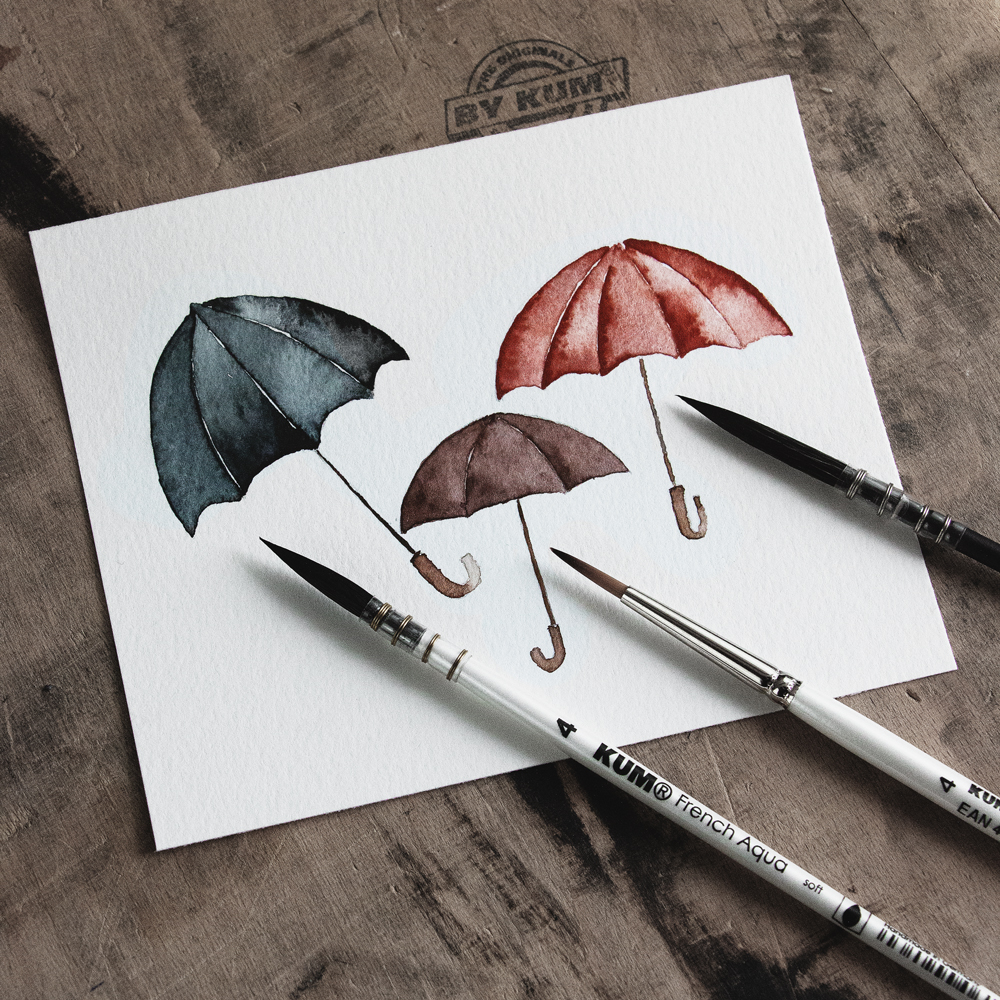
What features should a watercolor brush have?
A good watercolor brush is characterized above all by its high absorption capacity of water and paint.
This allows you to paint over a large area without having to constantly pick up new paint.
It is also important that the watercolor brush releases the paint evenly, otherwise it will result in a streaky result.
In order to be able to paint fine details in addition to large areas, a fine tip is extremely important.
With good watercolor brushes, both thin and thick lines can be painted with the same brush by applying different amounts of pressure.
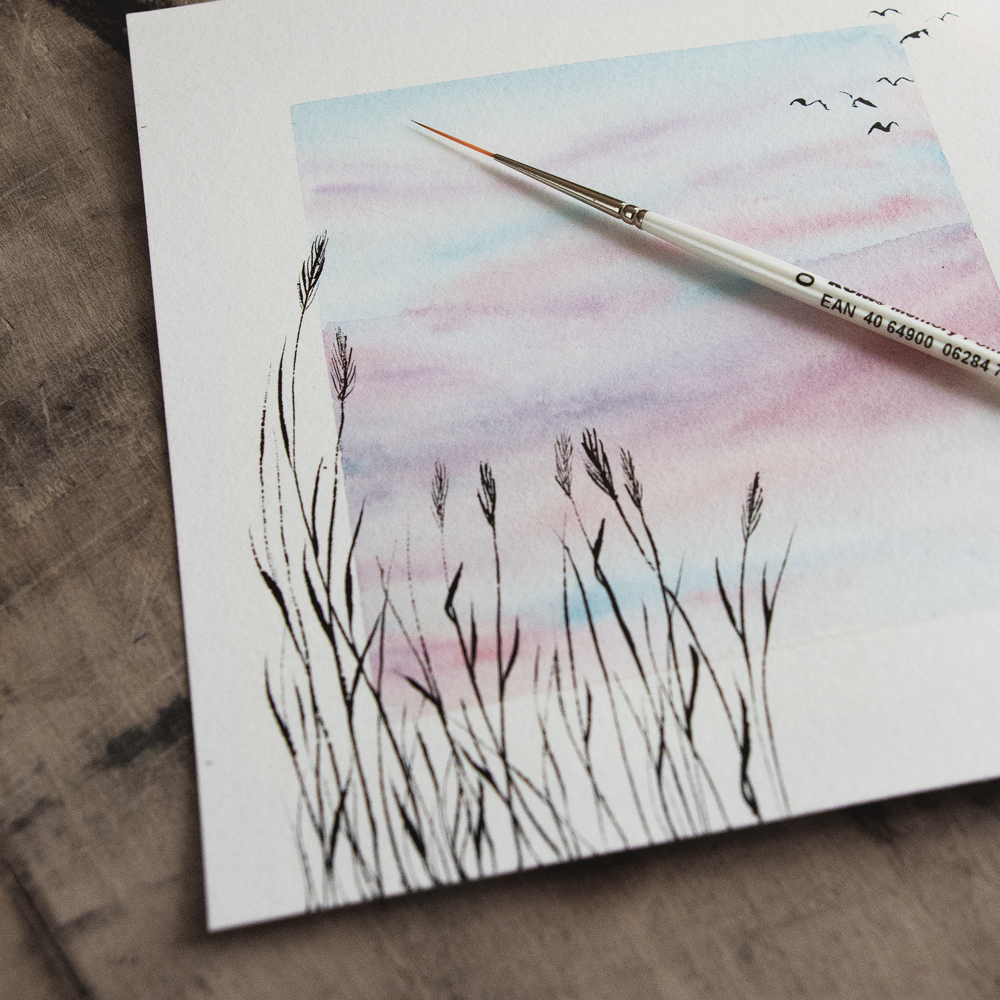
How important is the quality of the brush?
Hardly any other brush has such a high price range as watercolor brushes.
Especially as a beginner, it is difficult to figure out which brush to buy.
Even if you want to ‘just try it out’, it’s still important to pay attention to a decent quality, as poorly made brushes can frustrate in so many different ways.
Brushes that either lose hair or stick it out tangled quickly take away the desire to paint.
Which watercolor brush do you use for which technique?
There is not just one watercolor brush, but a variety of different ones.
Which one is right for you depends entirely on the technique and individual preferences.
If you want to paint very detailed and realistically, round watercolor brushes with a fine tip are particularly suitable, which have a slightly higher elasticity.
For large-scale backgrounds, French wash-up brushes are suitable in addition to large flat brushes.
The fluffy brush hairs not only store a lot of water, but also blend the transitions very softly.
For loose watercolor, these are the best choice.
In our guides, we go into more detail about the respective techniques:
KUM Memory Point
–
All-round brushes for watercolor, gouache and acrylic
–
Hardness Medium
–
Perfect Synthetic Imitation of Kolinsky Hair
KUM Faded
–
Unique watercolour brush for the highest demands
–
Hardness Medium-Soft
–
perfect for modern watercolor painting
